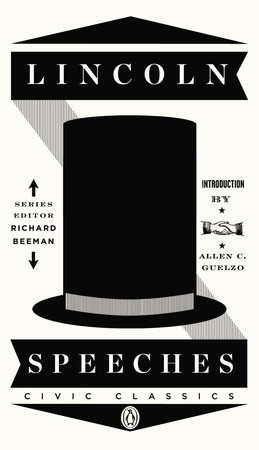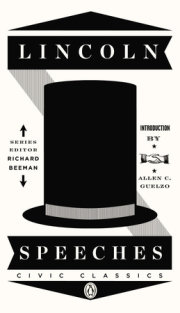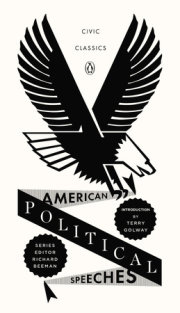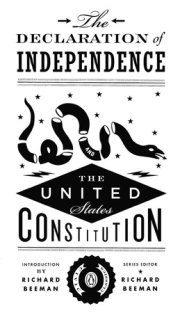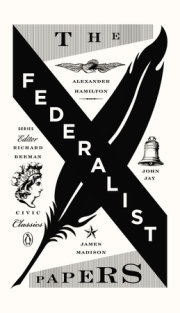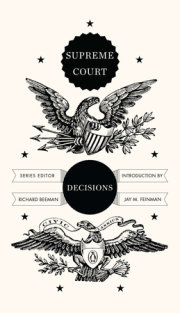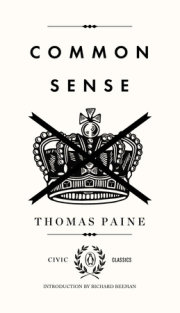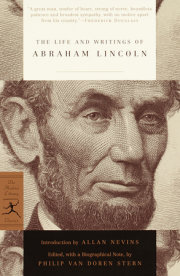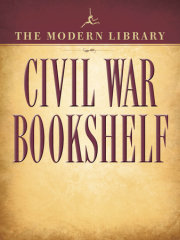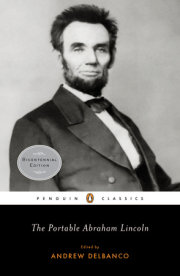PENGUIN BOOKS
LINCOLN SPEECHES
ABRAHAM LINCOLN was born in a log cabin in Kentucky in 1809 and was largely self-educated. As his family moved to Indiana and then Illinois, he worked as a hired hand, clerk, and surveyor until, in his twenties, he began to study law. He was elected to the Illinois House of Representatives in 1834. After marrying Mary Todd, Lincoln set up his own law practice and was elected to the U.S. Congress in 1846. As a candidate for the U.S. Senate in 1858, he debated Senator Stephen A. Douglas across the state and became a national figure. Nominated for president by the Republican Party, Lincoln was elected in November 1860 and took office in March 1861. Commander in chief of the Union forces during the Civil War, he issued the Emancipation Proclamation in 1863. Reelected in 1864, Abraham Lincoln was shot to death by an embittered Southern actor, John Wilkes Booth, in April 1865, five days after General Lee’s surrender at Appomattox.
ALLEN C. GUELZO is Henry R. Luce Professor of the Civil War Era and Director of Civil War Era Studies at Gettysburg College. He is the author of Lincoln: A Very Short Introduction, as well as two winners of the Lincoln Prize: Lincoln’s Emancipation Proclamation: The End of Slavery in America and Abraham Lincoln: Redeemer President.
RICHARD BEEMAN, the John Welsh Centennial Professor of History Emeritus at the University of Pennsylvania, has previously served as the Chair of the Department of History, Associate Dean in Penn’s School of Arts and Sciences, and Dean of the College of Arts of Sciences. He serves as a trustee of the National Constitution Center and on the center’s executive committee. Author of seven previous books, among them The Penguin Guide to the United States Constitution and Plain, Honest Men: The Making of the American Constitution, Professor Beeman has received numerous grants and awards, including fellowships from the National Endowment for the Humanities, the Rockefeller Foundation, the Institute for Advanced Study at Princeton, and the Huntington Library. His biography of Patrick Henry was a finalist for the National Book Award.
LINCOLN
SPEECHES
ABRAHAM
LINCOLN
EDITED WITH AN INTRODUCTION BY
ALLEN C. GUELZO
SERIES EDITOR
RICHARD BEEMAN
PENGUIN BOOKS
LINCOLN SPEECHES
SERIES
INTRODUCTION
We introduce the Penguin Civic Classics series by presenting our readers with a paradox. On the one hand, there is an abundance of evidence establishing that the vast majority of Americans, whatever their political differences, have an intense love of their country, believing that it has been one of the most successful experiments in human freedom and opportunity that the world has ever seen. And Americans are similarly united in having a deep reverence for their Constitution, for their institutions of government, and for the system of free enterprise that has been such a powerful engine for our economic growth. Americans see all of these as playing a vital role in making the nation as successful as it has been.
But there is an equally large body of evidence suggesting that Americans’ knowledge of their history and of the way in which their institutions have worked over the course of that history is embarrassingly meager. For example, a third of Americans believe that the Declaration of Independence was written after the end of the Civil War, and fewer than half can identify the three branches of our federal government. Nearly 40 percent of the students at fifty-five of America’s elite colleges and universities could not place the Civil War in the correct half century, and fewer than half of them, when presented with the text of the Gettysburg Address, were able to identify it. Nor does it appear that our knowledge improves much as we move closer to the present. Another survey has revealed that more than half of high school seniors thought that Italy, Germany, or Japan was a U.S. ally during the Second World War, and only 14 percent of those seniors could name any relevant fact about U.S. involvement in the Korean War. As the distinguished historian David McCullough has lamented, “While the clamorous popular culture races on, the American past is slipping away, out of sight and out of mind. We are losing our story, forgetting who we are and what it’s taken to come this far.”
With these discouraging results in front of us, it is no wonder that there is a growing clamor for an increased emphasis on “civic education,” defined by one leading authority as “the cultivation of the virtues, knowledge, and skills” necessary for carrying out one’s role as a citizen. That very phrase, “civic education,” sounds to many like a doctor’s prescription: “You need to take your medicine! It may not be very pleasant, but it is something you need to do in order to ensure not only your own health, but also the health of the body politic.” It is our hope that reading these volumes in the Penguin Civic Classics series will be much more pleasant than taking medicine, for although these volumes will indeed help improve the reader’s civic knowledge, we also hope that they will provide some civic inspiration—a genuine appreciation for, even an excitement about, some of the words, ideas, and actions that have shaped American society and government since their founding.
The history represented in these volumes, from the founding of the American colonies in the seventeenth century to the adoption of America’s Declaration of Independence to Abraham Lincoln’s inspiring Gettysburg Address to Barack Obama’s inaugural address as the first African American president in American history, is not merely a collection of names and dates to be memorized but, rather, a set of stories to be absorbed and enjoyed. And they are stories that have a real relevance and meaning to our lives today, whether we are debating the nature of America’s immigration laws, the extent to which the federal government should be involved in decisions relating to our health care, or, getting even closer to home, whether local schools and school districts have the constitutional right to search a student’s school locker.
In these volumes, the reader will encounter nearly all of the central themes in American history, as well as the dilemmas and conflicts that have provided much of the dynamism and excitement of that history. The central themes and ideas of American public life—democracy, equality, economic opportunity, the role of government in maintaining that delicate balance between public order and personal freedom, and the government’s responsibility to protect certain individual rights—have never remained static, nor have they ever elicited uniform agreement among American citizens.
The very first item in Terry Golway’s collection of important American speeches is a sermon given by Massachusetts governor John Winthrop, aboard the ship Arbella, as it transported the first Puritan settlers to the new colony. In that sermon, Winthrop described the Puritans’ mission in Massachusetts Bay as one of creating a “city upon a hill,” a model of virtue and purity for all others in the world to follow. But his vision of that society was in some important respects very much at odds with the values that guide America today. In the opening words of his sermon, Winthrop reminded his fellow colonists that “GOD ALMIGHTY in His most holy and wise providence, hath so disposed of the condition of mankind, as in all times some must be rich, some poor, some high and eminent in power and dignity; others mean and in submission.” Hardly a prescription for the democratic society that we claim to be today.
Fast-forward 136 years to the promise contained in Thomas Jefferson’s Declaration of Independence that “all men are created equal”—a view of society very different from that articulated by Winthrop. Jefferson’s city upon a hill was to be a nation dedicated to equality and the pursuit of happiness, not to a divinely ordained, inegalitarian social hierarchy. But, of course, in a world in which Africans were enslaved, women were considered legally subordinate to men and, indeed, in which many free white males were denied the right to vote because they did not own the requisite amount of property, Jefferson’s promise of equality fell far short of an accurate description of the reality of American society in 1776. Still, words have power, and Abraham Lincoln, for one, knew the power of those words. As is amply displayed in Allen Guelzo’s volume containing many of Lincoln’s principal speeches, time and time again Lincoln invoked Jefferson’s preamble as a pledge that Americans of his age were honor-bound to fulfill, describing the preamble as “the electric cord in that Declaration that links the hearts of patriotic and liberty-loving men together, that will link those patriotic hearts as long as the love of freedom exists in the minds of men throughout the world.”
Alas, Americans would fight a horrific, bloody civil war in which more than 600,000 people, slave and free, lost their lives before the nation was able to take the steps necessary to forge the link to which Lincoln had referred. Beginning in December of 1865, with the adoption of the Thirteenth Amendment, eliminating the institution of slavery; continuing with the adoption of the Fourteenth Amendment (July 1868), with its guarantee of “equal protection under the laws”; and culminating with the adoption of the Fifteenth Amendment (February 1870), asserting that the right to vote could not “be abridged…on account of race, color, or previous condition of servitude,” those ideas of democracy and equality began to be incorporated into our constitutional system. But although those three amendments represented an important step forward, America’s struggle to live up to the promise of the preamble was far from over. It took until 1920 for the nation to adopt the Nineteenth Amendment, giving to women the right to vote, and in spite of the guarantees of the Fourteenth and Fifteenth Amendments, the civil rights of African Americans, including the right to vote, continued to be undermined by the actions of individual state governments well into the twentieth century. When Lyndon Johnson, only the second (after Woodrow Wilson) Southern-born president since the Civil War, signed into law the Voting Rights Act of 1965, he too quoted the preamble to the Declaration and ended his speech with a phrase from the anthem of the civil rights movement of the 1950s and 1960s: “We Shall Overcome.” And when the first African American president, Barack Obama, delivered his inauguration speech on a cold day in January 2009, he began his speech by paraphrasing the words of Thomas Jefferson’s preamble, urging Americans “to carry forward that precious gift, that noble idea, passed on from generation to generation: the God-given promise that all are equal, all are free, and all deserve a chance to pursue their full measure of happiness.” Even in 2009 those words were, like Jefferson’s, expressions of hope, not descriptions of reality. But they have proved powerful indeed, and they continue to be a dynamic force in shaping the American future just as they have the American past.
Another important theme that emerges from these volumes of Civic Classics involves the age-old debate on how and where to strike the best balance between public order and personal liberty. For most of human history, those who held government power—kings or emperors or czars—usually dealt with that issue by ruthlessly imposing their own definition of what was good for the masses of people whom they governed. When Thomas Paine published his earth-shaking pamphlet Common Sense in January of 1776, his primary purpose was to persuade the American colonists to throw off British rule, but one of the key elements in his argument was the notion that while every society needs some form of government in order to provide security and protect the freedom of its citizens, the best and freest societies are those in which government is least intrusive. In Paine’s words: “Society in every state is a blessing, but government even in its best state is but a necessary evil; in its worst state an intolerable one.” Paine’s words struck a chord with his American readers, who were already suspicious of the overly powerful, distant government of Great Britain, and the Declaration of Independence, approved seven months later, reinforced that same theme. The distrust of concentrations of government power—the notion that government, while necessary, must be restrained—is deeply rooted in America’s revolutionary past, and, of course, is very much alive today, as we can observe by the vitality of political movements such as the Tea Party.
As powerful as Paine’s and Jefferson’s indictments of excessive British power may have been, they did not provide the answer to the question of how the independent American nation could create a government that would strike an ideal balance between order and liberty. The men who gathered in Philadelphia in the summer of 1787 to frame a new constitution for their still-fragile independent nation took a giant step forward in providing an answer when they created a governmental system based on the division of power between the individual states and the central government—the system that we now call federalism—and by further dividing power among the three branches of the federal government—in a system that we characterize as one of “checks and balances.”
But, as in so many other important ideas in American history, those involving federalism and checks and balances were subject to many different interpretations. Alexander Hamilton, James Madison, and John Jay, in the eighty-five essays comprising The Federalist Papers, attempted to address some of the concerns that Americans had about the excessive power of the proposed new federal government and, in the process, provided Americans with enduring insights about government and politics—insights that are still cited by Supreme Court justices in their judicial opinions even today. But Hamilton and Madison, the two principal authors of The Federalist Papers, began to disagree about the relationship of the new federal government to the individual states and to the people at large almost from the moment the new government commenced operation. The debate over the way the words of the Constitution should be interpreted, with Madison and Jefferson taking a “strict construction” position, and Hamilton, George Washington, and others arguing for a broader interpretation of the Constitution, has stayed with us until the present day. As readers of Jay Feinman’s collection of landmark Supreme Court cases will discover, the Court has spent a significant portion of its time over the years, beginning with Chief Justice John Marshall’s majority opinion in McCulloch v. Maryland (1819), wrestling with the extent of and limits on federal government power. Nor has that conflict been confined to judicial or intellectual arguments. In the years leading up to the Civil War, Northern and Southern politicians fought ferocious battles over the question of what authority the federal government had to legislate with respect to the expansion of slavery into new territories; once again, the ever-eloquent Abraham Lincoln weighed in on those issues, as is amply illustrated in Allen Guelzo’s selection of Lincoln speeches. In the end, of course, it was not words that settled the constitutional argument between North and South but the force of arms. The Civil War was, in some senses, America’s greatest civic failure, for knowledge and reason alone were not sufficient to settle the conflict between North and South. But however terrible the toll, it did resolve the paradox at the nation’s core—the existence of the institution of slavery in a nation that claimed to be devoted to liberty.
Mercifully, the Civil War was the last occasion in which our differences of opinion over governmental power have resulted in warfare, but the war of words has never ceased. Whether debating issues relating to economic regulation, immigration, or providing and regulating health care, Americans—Republicans and Democrats, Tea Party members and Occupy Wall Street activists—continue to differ, sometimes passionately, on the way our Constitution should be interpreted.
Americans, perhaps more than any other people in the world, have been ardently committed to defending their “rights.” Indeed, when most Americans today think of their Constitution, they think not so much about those enumerated powers such as the levying of taxes, the regulating of commerce, or the coining of money that are contained in the main body of the Constitution, but, rather, they think of the “Bill of Rights.” In fact, one of the few mistakes made by the framers of the Constitution in 1787 was their failure even to include a Bill of Rights in their final draft of the Constitution, a mistake that was, fortunately, remedied by the First Federal Congress in 1789. The rights articulated in our first ten amendments, including freedom of speech, the “free exercise of religion,” freedom of the press, and freedom from unlawful search and seizure, have not only provided the foundation for the freedoms that we so value today but also have prompted some of our most vigorously debated controversies. Readers of Jay Feinman’s volume on some of the most important Supreme Court decisions in our history will discover that, in general, the Court’s definition of the rights guaranteed in those amendments has tended to widen over the course of our history. But there remain limits on the Bill of Rights protections enjoyed by Americans. For example, the right of free speech has not extended to public protests in which the threat of violence is imminent, and in an era of GPS tracking devices and CCTV cameras, Americans are confronted with new challenges in defining what constitutes an unlawful search and seizure.
The constitutional protection of individual rights has not been confined to those items specifically enumerated in the Bill of Rights. The Ninth Amendment, which says that the “enumeration in the Constitution, of certain rights, shall not be construed to deny or disparage others retained by the people,” has been interpreted to include the right of privacy, including the right of a woman to have some control over her health and reproductive decisions. The best-known of the Supreme Court decisions relating to the right of a woman to terminate a pregnancy, Roe v. Wade (1973), far from settling that difficult question, has been followed by a series of subsequent Supreme Court decisions seeking to further refine and, in many cases, limit the right to obtain an abortion. The Court’s decisions in these areas, far from being legal abstractions of interest only to a few history or civics teachers, have had an impact, and will continue to have an impact, on the lives of millions of women.
This series of Penguin Civic Classics is based on the belief that acquiring a knowledge of America’s history and of our rights and responsibilities as citizens is not merely an abstract, academic exercise. It really matters. It can make a real difference in each and every one of our lives. And never more so than in the extraordinarily complicated, tumultuous, twenty-first-century world in which we live—a time of rapid, sometimes confounding, change. The historian David McCullough has spoken of the way in which our knowledge of history and of the way in which our institutions of government operate can give us a “sense of navigation, a sense of what we’ve been through in times past and who we are.” It can also empower us. If we are familiar with the way in which people in the past have confronted their problems, and if we have a decent understanding of how to make the best use of America’s institutions to deal with the problems confronting us in the present, we have a much better chance of being able to control our own destinies. Our opinions of the “correct” way to proceed may not always prevail, but we will at least be participants, not passive bystanders, in the ongoing drama that is the history of the United States. And, perhaps most important of all, it is often personally more rewarding, more fun, to be a participant rather than to be a bystander.
RICHARD BEEMAN
INTRODUCTION
Abraham Lincoln was not a naturally gifted speaker. His law partner of fourteen years, William Henry Herndon, remembered that “Lincoln’s voice was, when he first began speaking, shrill, squeaking, piping, unpleasant.” He had no formal education as a speaker—or much education at all, for that matter—and was wary of speaking off-the-cuff lest his rough-hewn mannerisms wear through the thin professional patina he had poured over them. On the night before his most famous speech, he declined a call for him “to make a speech” because “in my position it is somewhat important that I should not say any foolish things.”1
And yet, no one in American political history stands taller as a maker of speeches than Abraham Lincoln. He was not the most attractive speaker, to judge by the first impressions he made on listeners. But he understood that, in the civic framework of a democracy, the art of speaking was a necessary component of popular government. “Our government rests in public opinion,” Lincoln said in 1856. And how could it be otherwise (he explained in 1859), because “in a Government of the people, where the voice of all the men of the country, enter substantially into the execution—or administration, rather—of the Government—in such a Government, what lies at the bottom of it all, is public opinion.” Within that framework, no one in American public life gave clearer voice to the beauties of democracy, to the supremacy of natural rights over social status, to the moral foundations of politics, and to the practice of humility, perspective, and resilience as the hallmarks of democratic leadership. And whatever Lincoln lacked in grace and style as a speaker, he more than compensated for it by his deployment of logic, commonly acknowledged authority, wit, and clarity, along with a natural literary flair. Illinois judge David Davis (who presided over the Eighth Judicial Circuit, where Lincoln practiced as a lawyer) rated Lincoln as “the best stump speaker in the State.” Even though Lincoln suffered from “the want of an early education,” he “has great powers as a speaker,” and another legal associate of many years, Leonard Swett, warned that “any man who took Abe Lincoln for a simple-minded man would soon wake up with his back in a ditch.”2
Lincoln’s long suit as a speaker was not drama, but persuasion. Mary Cunningham Logan, who heard Lincoln in his series of debates with Stephen A. Douglas in 1858, thought that Douglas “won your personal support by the magnetism of his personality,” but Lincoln “seemed able to brush away all irrelevant matters of discussion, and to be earnestly and simply logical.” Give them each five minutes, and Douglas “would make the greater impression.” Give them an hour, “and the contrary would be true.” For Lincoln, the key to this persuasion was clarity. He cultivated what the philologist George Perkins Marsh called, in 1859, “the Saxon element”—an “archaic” simplicity (similar to the King James Bible and Shakespeare’s plays), along with repetition and reformulation, parallelism and antithesis, and the use of proverbial formulas. “Lincoln always struggled to see the thing or the idea exactly and to express that idea in such language as to convey that idea precisely,” Herndon recalled. He was, as John Todd Stuart (his first law partner) described him, “philosophical—logical—mathematical.”3
What little training Lincoln could be said to have had in speaking came from five sources: his strongly Calvinistic family’s memorization and recitation of the Bible, an early fascination with Shakespeare, the texts of political speeches printed in small-circulation newspapers and read aloud in community gatherings, the “readers” and “preceptors” that formed the bulk of schoolroom textbooks in America in the early nineteenth century, and the raw necessity of convincing juries. He had some practical preparation through participation in a “debating club” when he moved to New Salem, Illinois, in “1832 or 1833,” and it was in 1832 that he gave what was probably his first political speech, as a candidate for the Illinois state legislature at “a sale of goods” in the now-defunct village of Papsville, Illinois:
Gentlemen and Fellow-Citizens: I presume you all know who I am. I am humble Abraham Lincoln. I have been solicited by many friends to become a candidate for the legislature. My politics are short and sweet like the old woman’s dance. I am in favor of a national bank. I am in favor of the internal improvement system and a high protective tariff. These are my sentiments and political principles. If elected, I shall be thankful; if not it will be all the same.4
But the most potent influence on Lincoln as a speaker was the political culture of the Whig Party, whose policies favoring a “national bank,” the “internal improvement system,” and “a high protective tariff” were Lincoln’s banner all through his political career. The Whigs, organized in the 1830s by Henry Clay (whom Lincoln considered as his “beau ideal of a statesman”), were the party of middle-class entrepreneurs, as severely rational in their politics and speech as they were in economic calculation. It was the badge of Clay’s Whigs to appeal, not to “the feelings and passions of our Countrymen,” but “to their reasons and their judgment.” This stood in rhetorical (as well as economic and political) contrast to the Democratic Party, whose figurehead in Lincoln’s youth was the formidable Andrew Jackson. “Old Hickory” was unapologetic for his violence and coarseness of speech. Lincoln, in his search for precision, emotional restraint, and persuasive logic, would labor to act an entirely different political part. Even after the death of the Whig Party in the 1850s, and Lincoln’s alignment with the new Republican Party, he continued to speak like “an old-line Henry Clay Whig.”5
Lincoln never wrote a book. He dabbled in poetry and journalism, but almost all of what composes the standard collections of Lincoln’s writings are either letters or speeches. But the boundary between his writings and speeches was a porous one. In many cases before his election to the presidency in 1860, the speeches are only transcripts taken down in a more or less haphazard fashion by newspaper reporters and editors who heard him speak, as they did in the campaign speech he delivered in Worcester, Massachusetts, in 1848, or his Lewistown, Illinois, speech on the Declaration of Independence. The great debates with Stephen A. Douglas in 1858 that made Lincoln nationally famous were unrehearsed and unscripted, but they were taken down with unusual precision in shorthand and published word for word in the Chicago newspapers within forty-eight hours.
. All rights reserved. No part of this excerpt may be reproduced or reprinted without permission in writing from the publisher.

